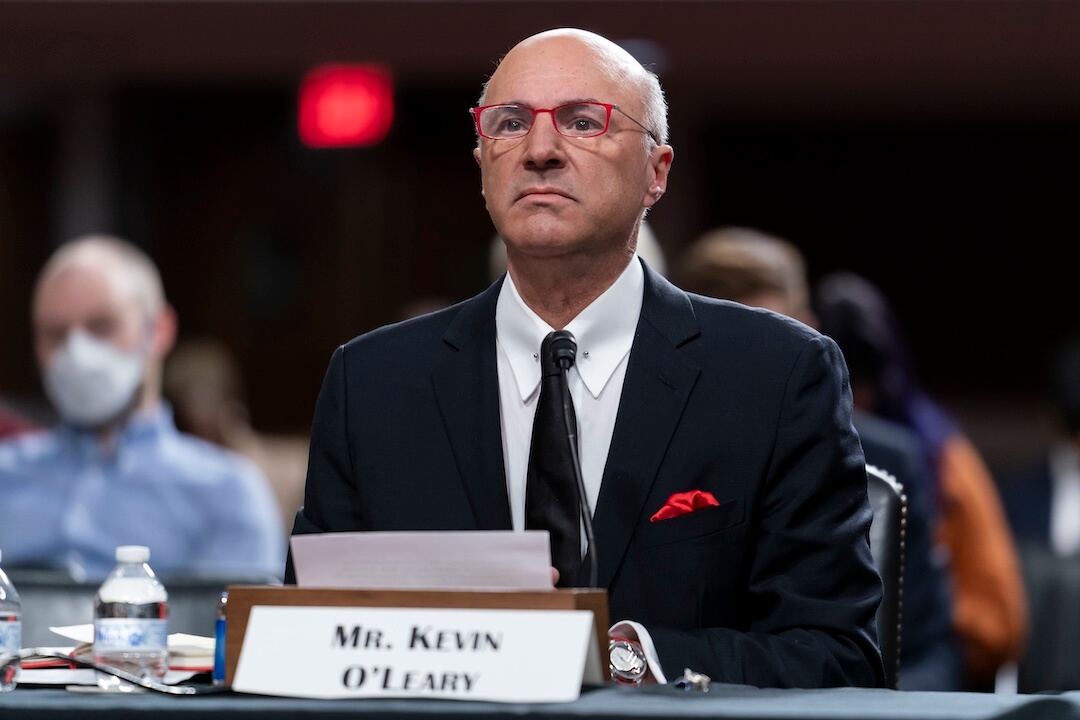The image is heartbreaking. A little girl, three or four years old, sits in a green boat and clutches a puppy amid rain and floodwaters. Her hair is soaked and stringy. Her face is contorted in sorrow.
You’d be heartless not to share it. Late last week, many social media users chose to do so — often with a note about sending more aid to Hurricane Helene victims and sending less aid to places like Ukraine and Israel.
But the photo isn’t real. It’s part of a rash of artificial intelligence-generated imagery, false claims and outright disinformation being spread in the wake of September’s devastating storm.
“The misinformation is adding to the chaos and confusion in many storm-battered communities, including many rural areas that lack power and cell service, leading locals to rely on word of mouth,” wrote The Washington Post’s Maxine Joselow, Will Oremus, Gerrit De Vynck and Mark Berman.
This batch of misinformation is particularly pernicious because much of it targets the people who are trying to recover. PolitiFact’s Madison Czopek fact-checked a false claim that FEMA is “confiscating” emergency supplies and donations; a claim that could keep those who believe it from accessing helpful aid.
She also wrote about a false claim that a $750 payment that FEMA is providing for essential supplies is actually a loan, and that those who don’t repay it could have their property seized.
Some misinformation, like the AI-generated little girl, weaponizes Helene’s devastation for political purposes. PolitiFact’s Loreben Tuquero wrote about a false claim that Kamala Harris said federal relief will be limited to $750 per person. And CNN’s Daniel Dale fact-checks a slew of lies from former President Donald Trump that attempt to sow discord about the Biden administration’s response to the storm.
For PolitiFact North Carolina, Paul Specht covers five misleading claims about Helene relief efforts in that state, including one false claim that the federal government is planning to seize property in the town of Chimney Rock.
Lies, lies, lies.
“I don’t really have words for how angry I’ve been every single time I open up X or Facebook or Instagram and see misinformation about Hurricane Helene and the recovery effort spread by people who are profiting off of other people’s misery at the worst moment of their life,” MediaWise director and Poynter faculty member Alex Mahadevan said. “I have a close friend who lives in western North Carolina. Knowing that the recovery efforts in his community are being hindered by people spreading misinformation and that local state and federal officials have to waste resources to address it is just infuriating.”
After a storm, local leaders often have to admonish onlookers who visit affected areas just to gawk at the damage. Their disaster tourism clogs damaged roadways, hinders cleanup efforts and alienates those who are just trying to move on with their lives.
I used to think such people were among the worst of humanity. How naive. Those who spread this type of misinformation are far worse.
By Ren LaForme, managing editor
More from Poynter about Hurricane Helene:
- Through widespread outages and collapsed infrastructure, North Carolina journalists hustle to cover Helene’s aftermath
- An Asheville-based journalist and Poynter faculty member describes Hurricane Helene’s aftermath
- No, FEMA and other emergency responders are not ‘confiscating’ Hurricane Helene emergency supplies, donations
- A photojournalist reported on dozens of hurricanes over the years. Then Hurricane Helene flooded his home.
- After Hurricane Helene, ‘Neighbors are what’s getting us through this’
Listen to our podcast
Episode two of “The Poynter Report Podcast” is out today. It features a conversation with Poynter president Neil Brown in which we talk about Poynter’s recent OnPoynt report, which examines the current state of journalism.
As I wrote a couple of weeks ago, today’s journalism world is swamped by words such as layoffs, buyouts, staff reductions, reorganizations, news fatigue, mistrust and distrust and no trust.
OK, so it’s not all ice cream and rainbows. But it’s not all doom and gloom either. Brown told me there’s plenty to be optimistic about, such as some of the work being done in places such as Baltimore, as well as plenty of things news outlets can try to not only stay relevant, but thrive.
Whether you’re in the media business, or you’re a media consumer, I think you’ll find our conversation enlightening. So please give it a listen. (It’s also available on Apple Podcasts, Spotify and Amazon Music.)
Also, you can go back to hear our debut episode with NPR TV critic and media analyst Eric Deggans.
If you like what you hear, give us a nice review. It helps a lot and allows us to continue bringing you interesting conversations about the media business.
By Tom Jones, senior media writer and host of “The Poynter Report Podcast”
A group of NYC journalists aims to revitalize local political coverage

People in privacy booths vote in a midterm election at an early voting polling site at Frank McCourt High School on the Upper West Side of Manhattan in New York City on Tuesday, November 1, 2022. (AP Photo/Ted Shaffrey)
Prominent New York City journalists are banding together to report on and endorse local politicians, CNN reported Friday.
The group, which is currently calling itself the New York Editorial Board, plans to start interviewing politicians after the November elections. They will report their findings, and individual members may make endorsements based on those interviews.
The initiative is in part a reaction to The New York Times’ recent decision to stop endorsing candidates in local elections, Ben Smith, Semafor editor-in-chief and one of the members of the group, told CNN. That decision generated outcry from some readers who told the Times that they viewed the editorial boards’ endorsements as a vital resource.
The Times, however, is part of a growing trend among newspapers to stop endorsing political candidates. The roughly 200 papers belonging to Alden Global Capital, for example, stopped endorsing candidates in major races (presidential, Senate and gubernatorial) in 2022.
“This came out of organic conversations among friends about how to fill some of the hole left for independent, experienced journalistic editorial interviews that used to be an important test for public officials,” Smith said. “Public-interest journalism can also be a counterweight to the interest groups and transactions that dominate the politics of America’s greatest city.”
By Angela Fu, media business reporter
Here are two leftovers about media business transformation from last week; pieces on the challenges of delivering serious journalism that will attract an audience. There are no pat solutions but it’s good food for thought.
News providers are letting themselves off the hook
Rasmus Kleis Nielsen has stepped down as director of the Reuters Institute for the Study of Journalism, but his work in spotting worldwide trends continues.
He summed up his current thinking in a speech last month in Berlin. Its gist: Trust and news avoidance persist, but news providers may be misleading themselves if they keep presenting traditionally framed journalism that’s been recast into a digital format or marketed better to younger demographics or political partisans.
Reuters Institute work, Nielsen said, has shown “the public is essentially telling us every day and in growing numbers that even though they often want what journalism aspires to provide, they’re not feeling that we’re delivering it in a way that makes it worth their while to engage with us. …
“The problem is much more fundamental than convincing people to pay. The problem is that publishers are struggling to convince people to pay attention to news.”
Too often, he continues, providers may be unintentionally falling into “rearguard action,” effectively reverting to a time when the news was written by white men for white men. That won’t do it.
Nielsen said he doesn’t have a solution. But I like his question as one that editors should consider in the mix of coverage they choose and reporters and visual journalists should be asking themselves repeatedly as they do stories.
By Rick Edmonds, media business analyst
The Wichita Beacon — at sea in the middle of Kansas?
Nieman Lab’s Sophie Culpepper published a deep dive into the nonprofit startup the Wichita Beacon, which has experienced inordinate turnover in its small newsroom. Long, as many Nieman pieces are, her story has the virtue of airing out the views of reporters and editors who have left. (By Culpepper’s count, all three of the original reporters and the editor were gone in less than a year from a summer 2021 launch, and at least four more have left since).
The departures seem to add up to a pattern of confusion over the mission, together with a backbreaking workload. Plus there was a feeling that way too many news decisions were coming from the Beacon’s older and bigger sibling in Kansas City, 200 miles away.
Culpepper’s conclusion: Even with adequate startup funding commitment ($4 million) and an idealistic devotion to local news, reporters need to be on board for the exciting work of designing something new.
By Rick Edmonds, media business analyst
Media tidbits and interesting links
- In perhaps the most complete examination yet of Donald Trump’s age and its effect on his candidacy, The New York Times conducted a computer analysis of his speeches and found that they “now last an average of 82 minutes, compared with 45 minutes in 2016. Proportionately, he uses 13 percent more all-or-nothing terms like ‘always’ and ‘never’ than he did eight years ago, which some experts consider a sign of advancing age. Similarly, he uses 32 percent more negative words than positive words now, compared with 21 percent in 2016, which can be another indicator of cognitive change. And he uses swearwords 69 percent more often than he did when he first ran, a trend that could reflect what experts call disinhibition.”
- Semafor’s Max Tani writes about a strengthening news platform in “Substack wants to do more than just newsletters.” He writes, “Seven years since its launch, the newsletter platform Substack has consolidated its dominance of the independent news business. Now, it’s trying to position itself as something more: a central platform for paying creators of all kinds, untethered to the news cycle and beyond the tough-to-monetize medium of text.”
- Vice President Kamala Harris appeared on the “Call Her Daddy” podcast over the weekend, where she faulted Trump for calling himself a “protector” of women and responded to attacks on her family from Republican Arkansas Gov. Sarah Huckabee Sanders. The Washington Post’s Cleve R. Wootson Jr. has more.
- And Bloomberg News’ Alicia Diaz and Akayla Gardner write, “Harris, Walz Kick Off Week-Long Media Blitz With ‘Call Her Daddy’.”
- The Hollywood Reporter’s Susan Mulcahy and Frank DiGiacomo with “How Page Six Became the Most Feared Gossip Column in the World.”
More resources for journalists
- Check out our dynamic, in-person workshop for new newsroom managers.
- Try our free Grant Writing for Journalists self-directed course.
- Encourage an outstanding colleague to apply for Leadership Academy for Women in Media.
Have feedback or a tip? Email Poynter senior media writer Tom Jones at tjones@poynter.org.
The Poynter Report is our daily media newsletter. To have it delivered to your inbox Monday-Friday, sign up here.










